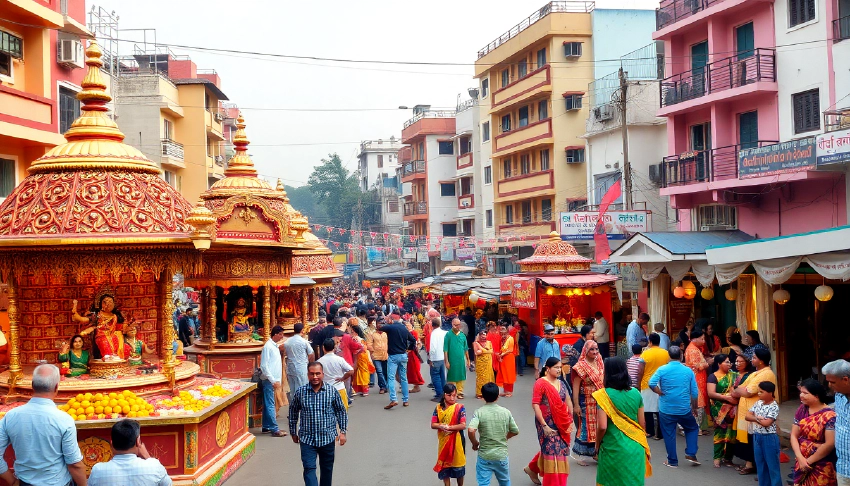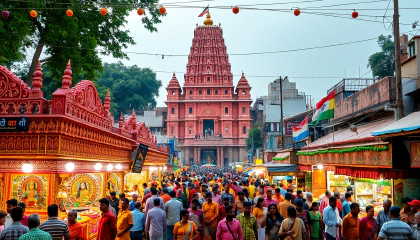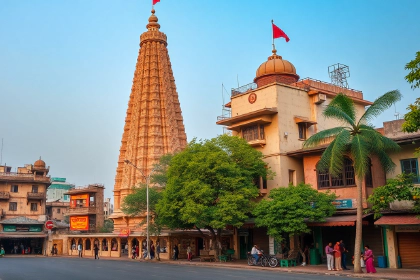
Chittaranjan Park: Delhi's Little Kolkata Celebrates Bengali Heritage
Celebrating Cultural Heritage: Chittaranjan Park as Delhi’s “Little Kolkata”
Nestled in the heart of South Delhi, Chittaranjan Park (CR Park) stands as a vibrant testament to the enduring spirit of Bengali culture in India’s capital. This article explores the rich tapestry of traditions, culinary delights, and community warmth that have earned CR Park the affectionate nickname “Little Kolkata.”
The Birth of a Bengali Enclave
A Home for the Displaced
Chittaranjan Park’s story begins in the aftermath of India’s partition. Originally known as the East Pakistan Displaced Persons (EPDP) Colony, it was established in the 1960s to accommodate refugees from East Bengal (now Bangladesh). The neighborhood’s journey from rocky terrain to a thriving cultural hub reflects the resilience and determination of its early settlers.
From EPDP to CR Park
In the 1980s, the colony was renamed Chittaranjan Park in honor of the renowned Bengali freedom fighter Chittaranjan Das. This change marked a pivotal moment in the area’s identity, solidifying its status as a center of Bengali culture in Delhi.
A Culinary Paradise
Street Food Extravaganza
CR Park’s streets come alive with the aromas of authentic Bengali cuisine. Visitors can indulge in a gastronomic adventure, sampling delicacies like:
- Phuchka (pani puri with a tangy Bengali twist)
- Ghugni (spiced yellow peas)
- Churmur (a crunchy, savory snack)
- Jhalmuri (puffed rice mixed with spices and vegetables)
Sweet Temptations
No Bengali culinary experience is complete without sweets. CR Park boasts numerous confectioneries offering traditional desserts such as:
- Rasgulla
- Sandesh
- Mishti Doi
- Pitha (rice cakes)
These sweet treats are not just food; they’re an integral part of Bengali culture and hospitality.
Festivals and Cultural Celebrations
Durga Puja: The Crown Jewel
Durga Puja in CR Park is a spectacle that draws visitors from across Delhi and beyond. The neighborhood transforms into a mini-Kolkata, with:
- Elaborate pandals (temporary structures housing Durga idols)
- Cultural performances showcasing Bengali music, dance, and theater
- Food stalls offering a wide array of Bengali delicacies
- Community gatherings that foster a sense of unity and belonging
Year-Round Cultural Calendar
While Durga Puja may be the highlight, CR Park’s cultural calendar is packed throughout the year with events like:
- Saraswati Puja
- Kali Puja
- Bengali New Year celebrations
- Literary meets and book fairs
These events serve to preserve and promote Bengali traditions in the heart of Delhi.
Community Life and Social Fabric
The Art of Adda
Central to CR Park’s social life is the concept of “adda” – informal gatherings where residents engage in lively discussions on topics ranging from politics to literature. These addas often take place in:
- Local tea stalls
- Community parks
- Cultural centers like the Chittaranjan Bhawan
Education and Cultural Institutions
CR Park is home to several institutions that play a crucial role in preserving Bengali language and culture:
- Raisina Bengali School: Offers education with a strong emphasis on Bengali language and traditions
- Bangiya Samaj: Organizes cultural events and promotes Bengali arts
- Kali Mandir: Serves as both a religious and cultural center
These institutions ensure that the younger generations remain connected to their roots while embracing the multicultural ethos of Delhi.
The Changing Face of CR Park
Embracing Diversity
While CR Park remains a predominantly Bengali neighborhood, it has evolved to welcome residents from diverse backgrounds. This influx has led to:
- A more cosmopolitan atmosphere
- Fusion of Bengali traditions with other cultures
- New businesses catering to a wider demographic
Modern Amenities Meet Traditional Charm
CR Park has managed to strike a balance between preserving its cultural heritage and adapting to modern urban life. The neighborhood now features:
- Contemporary shopping complexes alongside traditional markets
- Modern residential buildings coexisting with older Bengali-style homes
- Improved infrastructure and connectivity to other parts of Delhi
Conclusion
Chittaranjan Park stands as a shining example of how cultural enclaves can thrive within a larger urban landscape. Its ability to maintain a strong Bengali identity while embracing change and diversity makes it a unique and cherished part of Delhi’s social fabric. For anyone seeking to experience the warmth of Bengali culture, the flavors of its cuisine, or the vibrancy of its festivals, CR Park offers an authentic slice of “Little Kolkata” in the heart of India’s capital.
As CR Park continues to evolve, it remains a testament to the power of community, cultural preservation, and the enduring spirit of those who call it home. Whether you’re a long-time resident or a curious visitor, Chittaranjan Park invites you to immerse yourself in its rich tapestry of traditions, flavors, and warm Bengali hospitality.





